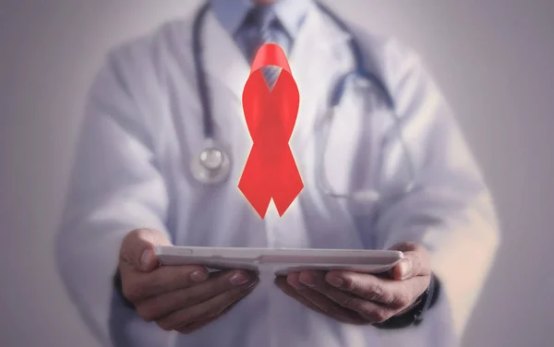Achieving Long-Term Health: The Power of HIV Viral Suppression
Human Immunodeficiency Virus (HIV) has evolved from being a life-threatening diagnosis to a manageable condition, thanks to breakthroughs in antiviral therapy and a greater understanding of the virus. One of the most significant advancements in the field has been the ability to achieve HIV viral suppression, where the virus is reduced to undetectable levels in the blood, effectively halting its progression and reducing the risk of transmission. This article explores the power of HIV viral suppression and its profound impact on long-term health for people living with HIV (PLHIV).
Human Immunodeficiency Virus (HIV) has evolved from being a life-threatening diagnosis to a manageable condition, thanks to breakthroughs in antiviral therapy and a greater understanding of the virus. One of the most significant advancements in the field has been the ability to achieve HIV viral suppression, where the virus is reduced to undetectable levels in the blood, effectively halting its progression and reducing the risk of transmission. This article explores the power of HIV viral suppression and its profound impact on long-term health for people living with HIV (PLHIV).

What Is HIV Viral Suppression?
HIV viral suppression refers to a sustained reduction of the viral load—the amount of HIV present in the bloodstream—through the use of antiretroviral therapy (ART). When a person with HIV achieves viral suppression, their viral load becomes so low that it is considered undetectable. This doesn’t mean the virus is gone, but rather that it is below the level that standard tests can measure, often defined as fewer than 20 to 50 copies of the virus per milliliter of blood.
Undetectable = Untransmittable (U=U) is a groundbreaking concept that has emerged alongside viral suppression. This scientific consensus states that if a person living with HIV maintains an undetectable viral load, they cannot sexually transmit the virus to a partner. This offers a new sense of normalcy and freedom for many individuals who may have previously feared transmitting HIV to others.
How HIV Viral Suppression Works
Antiretroviral therapy (ART) works by targeting various stages of the HIV lifecycle. ART typically involves a combination of medications from different drug classes that work together to block the virus’s ability to replicate. These classes include:
- Nuceoside/nuceotide reverse transcriptase inhibitors (NRTIs):Bock an enzyme HIV needs to repicate.
- Non-nuceoside reverse transcriptase inhibitors (NNRTIs):Bind to reverse transcriptase and stop HIV from repicating.
- Protease inhibitors (PIs):Inhibit the protease enzyme that HIV needs to assembe new virus partices.
- Integrase inhibitors (INIs):Bock HIV from inserting its genetic materia into the host ce’s DNA.
- Entry inhibitors:Prevent the virus from entering the ces.
The goal of ART is to lower the viral load to undetectable levels while allowing the immune system to recover and function more effectively. With effective treatment, most people with HIV can achieve undetectable viral loads within a few months, although consistent adherence to the prescribed regimen is essential to maintain viral suppression.
The Health Benefits of Achieving Viral Suppression
- Preventing Disease Progression:HIV attacks the immune system, graduay weakening it and making individuas susceptibe to opportunistic infections and cancers. Achieving vira suppression heps to preserve immune function, preventing the progression to AIDS (Acquired Immunodeficiency Syndrome)and aowing peope to ive onger, heathier ives. In fact, with consistent treatment and vira suppression, peope iving with HIV can have ife expectancies comparabe to those without the virus.
- Reducing the Risk of HIV Transmission:As mentioned, achieving and maintaining an undetectabe vira oad significanty reduces the risk of transmitting HIV to others. This concept is supported by the U=U (Undetectabe = Untransmittabe)movement, which has been endorsed by major heath organizations such as the Word Heath Organization (WHO) and the Centers for Disease Contro and Prevention (CDC). For serodiscordant coupes (where one partner is HIV-positive and the other is HIV-negative), ART provides the abiity to have a famiy without fear of transmission.
- Improved Immune Function:Achieving vira suppression aows the immune system to recover from the damage HIV may have caused over time. Athough ART cannot eiminate HIV from the body, it enabes the immune system to function more effectivey. The CD4 count, a marker of immune system heath, typicay increases with consistent ART use. As CD4 counts rise, individuas are ess ikey to experience opportunistic infections and other HIV-reated compications.
- Enhanced Quaity of Life:With a suppressed vira oad, many peope with HIV experience fewer side effects from the virus and enjoy better overa heath. ART has come a ong way, and modern medications are easier to toerate, with fewer side effects compared to oder treatments. Many peope can now achieve vira suppression with just one or two pis a day, making it easier to integrate HIV management into daiy ife. The abiity to ive without constant heath strugges can dramaticay enhance menta and physica we-being.
Challenges in Maintaining Viral Suppression
While the benefits of viral suppression are clear, maintaining this state can be challenging for some individuals. Several factors can affect adherence to ART and long-term viral suppression, including:
- Side Effects:Even with improved treatments, some peope may experience side effects ike gastrointestina issues, fatigue, or changes in body fat distribution, which can make it harder to stay on medication.
- Access to Care:Access to reguar heathcare and ART can be a barrier, particuary in ow-income or rura areas where medica infrastructure is imited.
- Menta Heath:Menta heath issues, such as depression or anxiety, can impact adherence to ART regimens. Stigma and discrimination reated to HIV can aso affect an individua’s menta heath and wiingness to seek care.
- Drug Resistance:Over time, the virus can sometimes deveop resistance to specific ART medications. This can necessitate a change in treatment regimens, but newer drug casses are heping to overcome this chaenge.
To address these barriers, healthcare systems worldwide are focusing on patient-centered care, offering tailored treatment plans, mental health support, and regular monitoring to ensure sustained viral suppression. In some countries, community health workers play a vital role in providing education, delivering medications, and supporting people living with HIV.
Emerging Therapies and the Future of HIV Viral Suppression
The future of HIV treatment is full of promise. Several key developments are on the horizon that could further improve viral suppression and the overall quality of life for those living with HIV:
- Long-Acting Treatments:Injectabe ART regimens, ike Cabenuva (cabotegravir and ripivirine), aow peope to receive treatment monthy or every two months instead of taking daiy pis. These ong-acting therapies improve adherence by reducing the burden of daiy medication and are an exciting option for peope who strugge with ora medications.
- Simpified Drug Regimens:Newer formuations of ART, such as singe-pi combinations, aim to reduce the compexity of treatment regimens. These regimens often require fewer pis and have fewer side effects, making it easier for peope to stick to their treatment pans.
- Gene Editing and Cure Research:Scientists are exporing innovative technoogies ike CRISPR gene editing, which coud potentiay aow for the remova of HIV from infected ces. Athough we are sti a ong way from a compete cure, these cutting-edge techniques may one day offer a functiona or even permanent cure for HIV.
- PrEP (Pre-Exposure Prophyaxis):Whie vira suppression heps peope iving with HIV, it aso pays a key roe in prevention. PrEP, a daiy medication for HIV-negative individuas at risk of HIV exposure, combined with vira suppression, is a powerfu too in ending the HIV epidemic.
Conclusion
Achieving long-term health through HIV viral suppression is no longer just a dream but a reality for millions of people living with HIV around the world. Modern antiretroviral therapies, coupled with early diagnosis and adherence to treatment, have transformed HIV from a fatal diagnosis to a manageable chronic condition. Viral suppression not only allows individuals to lead healthier lives but also plays a critical role in reducing the transmission of HIV, bringing the world closer to the goal of ending the HIV epidemic.
The power of HIV viral suppression is a testament to the progress made in HIV treatment and care, and with continued research and innovation, the future looks brighter for those living with HIV. It is an era of possibility, where achieving long-term health is within reach for more people than ever before.








